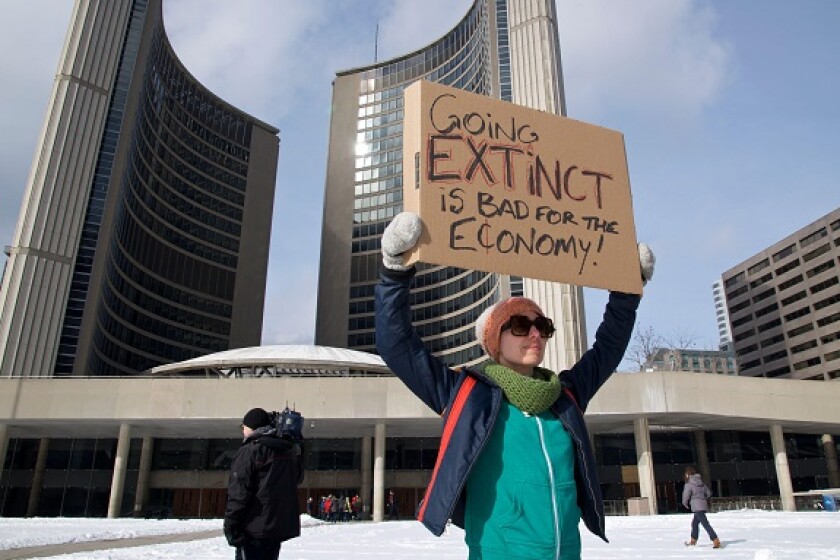Finance gets a mixed report card in this week’s report from the Intergovernmental Panel on Climate Change, on how far the world has got in mitigating climate change. Well, mostly bad.
Finance flows for the investments needed this decade to keep global warming to 1.5°C are still only a third to a sixth of what they need to be. Meanwhile, more public and private money is still going to fossil fuels than to climate change adaptation and mitigation.
The Covid pandemic and Russia’s invasion of Ukraine have opened a ‘New Energy World Order’, said Francisco Blanch, Bank of America’s head of global commodities research, this week.
Greens agree with him — but not on what it consists of.
BofA foresees Europe’s pivot away from Russian gas sparking a wave of investment in US shale and liquefied natural gas infrastructure — there are signs it has already begun. For all his climate consciousness, President Joe Biden, desperate to bring down energy costs, is unlikely to stand in the way.
This runs directly counter to the recommendations from the International Energy Agency and the IPCC that no more investment in fossil fuel infrastructure is needed.
Even to hit 2°C, global emissions have to peak by 2025 — and fundamentally, that means oil, gas and coal consumption must fall.
What are capital markets doing about it?
The bond market is busying itself with a wave of sustainability-linked bond issuance. The hopes of Enel, when it introduced the product in 2019, that sustainable issuers would obtain large interest savings with the instrument have faded.
One bank estimates investment grade companies issuing SLBs saved 2bp last year in euros and 1bp in sterling. ABN Amro puts it at about 3bp in euros, but says greeniums are inconsistent.
But this has not put off issuers at all. Enel, Pernod Ricard, Sanofi and Čez are just some of the companies that have issued them in the past 10 days, several of them for the first time.
These deals are not increasing the flow of finance to climate mitigation — closing the huge investment gap the IPCC shines a light on. Commercially viable projects in the developed world can get financed, with or without fancy bonds.
The gaps are for investments that are not commercially attractive — including because of regulatory barriers and harmful subsidies — or in capital-poor regions.
But SLBs can address the climate crisis in a different way. They are driven by communication — issuers wanting to inform investors, including shareholders, about their sustainability plans, and show that they mean business.
This communication has to become two way. The precise pricing of SLBs will not ultimately drive change. What could is making sure the targets issuers adopt are stringent enough.
Global emissions must halve by 2030. Companies not on track for that are part of the problem. Some will need to go still faster.
The prospect of issuing an SLB does not, for most companies, determine how it sets its sustainability targets. They grow out of much more fundamental industrial and investor relations considerations. But SLB issues are an important forum for talking about the targets, and getting feedback on them.
Investors that refuse to buy an unambitious bond will hardly be noticed in the maelstrom of a deal. But if they tell the issuer so, they will get attention. And investors that comment publicly will be remembered across the market.
The most important thing bond investors can do to help with climate change is demand fast and meaningful transition from issuers.
This should apply to all borrowers of any kind. SLB issuers, which have raised the topic themselves, are a good place to start.

